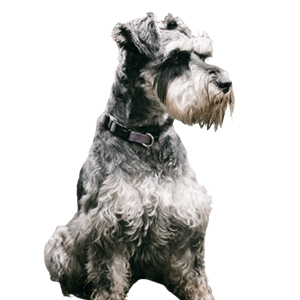Kerry Blue Terrier

The Kerry Blue came into existence in the south and west of Ireland, first getting noticed in the Ring of Kerry. Here the canine has been known for a century as a flexible farm canine, hunting small game and birds, retrieving over land and water, and herding sheep and cattle. It is a mystery that such a proficient and appealing canine should have remained unknown outside of Ireland for so long; however, it only came into the English and American show scenes around the 1920s. It acquired AKC popularity in 1924. Early specimens had been disheveled. However, as it required more grooming, the breed stuck on and became a famous show canine. The Kerry Blue is one of the most pleasing of all dogs. The breed has the peculiarity of being born black, with the blue coloration not appearing between nine months to 2 years of age. This terrier is a flexible dog, including police work and training to the list of talents. The Kerry Blue Terrier enjoys a modest reputation as a pet despite this.
- Type - Terrier
- Weight -33-40 lb
- Height- 17.5-19.5"
- Family -Terrier
- Date of Orgin-1700s
- Area of Orgin -Ireland
- Other Names -Irish Blue Terrier
Energy Level
Exercise Requirements
Playfulness
Affection Level
Friendliness To Dogs
Friendliness To Other Pets
Friendliness To Strangers
Watchfulness
Ease of Training
Grooming Requirements
Heat Sensitivity
Vocality
Temperement
A flexible terrier, the Kerry Blue’s personality is many-faceted, from hunting and herding to being simply a fun-loving companion. This canine requires everyday mental and bodily activity and training in a secure area. The Kerry Blue likes to run, chase, explore, play, and dig. The canine is polite indoors. The breed may be defensive toward strangers and can be competitive toward different puppies and small animals but greets verified buddies with fantastic enthusiasm. This breed is intelligent and independent, and a few may also have a tendency to bark.
Upkeep
The Kerry Blue requires a perfect amount of exercise; however, it may meet those needs with a long stroll on a leash, an energetic play session, or a chance to discover off-leash in a secure area. The coat requires combing approximately twice a week–more frequently if around twigs and leaves–plus scissoring and coat-shaping each month.
Health
“Major diagnosis: cerebellar abiotrophy
Minor diagnosis: cataract, spiculosis, hair follicle tumors, entropion, KCS, CHD, otitis externa
Occasionally seen: retinal folds, clotting factor XI deficiency, vWD, degenerative myelopathy (DM)
Suggested tests: eye, hip, (vWD), (factor XI), (DM)
Life span: 12–15 years”
Disclaimer
Note: While the characteristics mentioned here may frequently represent this breed, dogs are individuals whose personalities and appearances will vary. Please consult the adoption organization for details on a specific pet.
